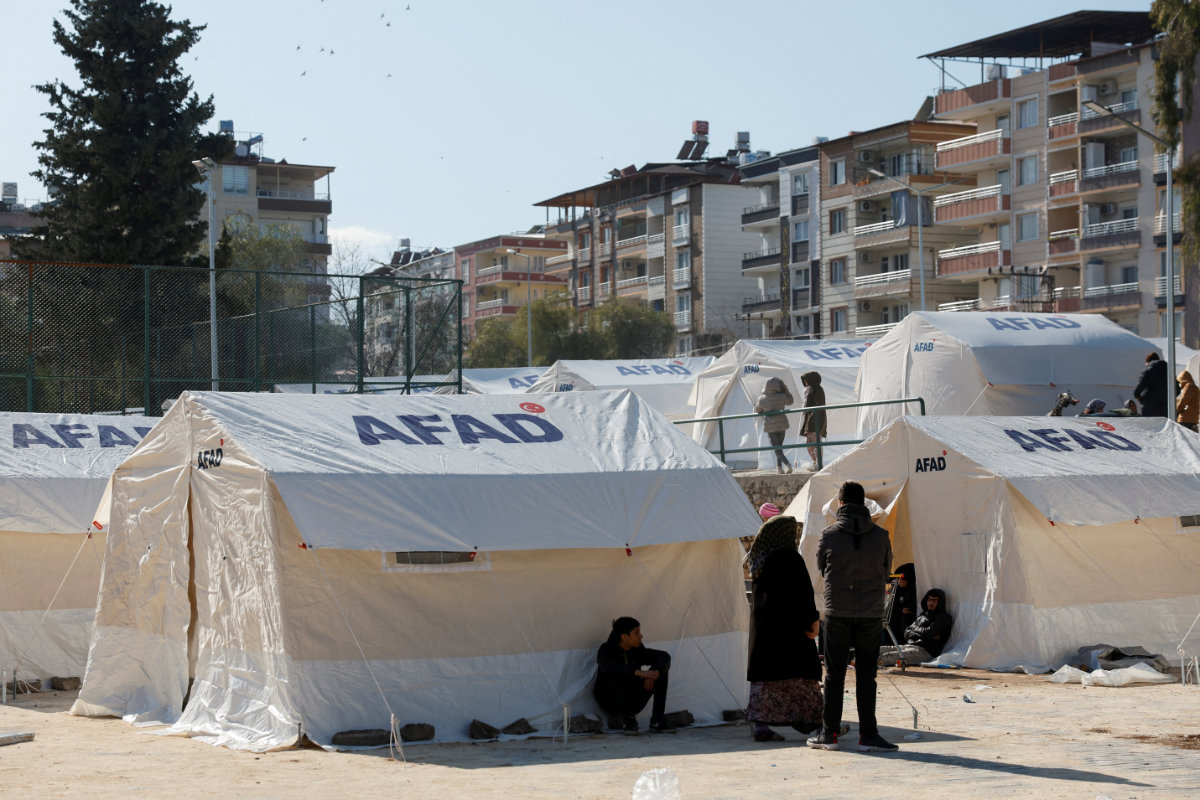ANKARA: Turkiye has begun work to rebuild homes following this month’s devastating earthquakes as the combined death toll in Turkiye and Syria surpassed 50,000.
Over 160,000 buildings containing 520,000 apartments collapsed or were severely damaged in the Feb. 6 earthquakes that killed tens of thousands in Turkiye and Syria.
The Disaster and Emergency Management Authority announced the death toll in Turkiye rose to 44,218 on Friday night. With Syria’s latest announced death toll of 5,914, the combined death toll in the two countries rose to above 50,000.
President Recep Tayyip Erdogan has pledged to rebuild homes within a year, although experts have said the authorities should put safety before speed. Some buildings that were meant to withstand tremors crumbled in the latest earthquakes.
“For several projects, tenders and contracts have been done. The process is moving very fast,” an official said, speaking on condition of ano- nymity, adding there would be no compromise on safety.

A view shows Disaster and Emergency Management Presidency's temporary shelter for earthquake survivors in Kirikhan, Turkiye on February 8, 2023, in the aftermath of the M-7.8 earthquake that hit the country's south. (REUTERS/File Photo)
Authorities say tents have been dispatched for the many who are homeless, but people have reported trouble accessing them.
“I have eight children. We are living in a tent. There is water on top (of the tent) and the ground is damp. We are asking for more tents and they don’t give them to us,” Melek, 67, who was waiting in a line to collect aid outside a high school in the town of Hassa.
The school was being used as an aid distribution center by a group of volunteers called Interrail Turkiye.
One volunteer, Sumeyye Karabocek, said the shortage of tents remained the biggest problem.
Erdogan’s government has endured a wave of criticism over both its response to the devastation and what many Turks say were years of non-enforcement of construction quality control.
The Turkish government’s initial plan now is to build 200,000 apartments and 70,000 village houses at a cost of at least $15 billion, he said.
US bank JPMorgan had estimated rebuilding houses and infrastructure will cost $25 billion.
Turkiye also issued new regulations under which companies and charities can build homes and workplaces to donate to the Urbanization Ministry for people in need.
Investigations have been launched against more than 600 people in relation to buildings that collapsed in Turkiye’s quake.
Justice Minister Bekir Bozdag said 184 of the 612 suspects had been jailed pending trial. Those in custody include construction contractors and building owners or managers, he said in televised comments from a coordination center in Diyarbakir in southeast Turkiye.
“The detection of evidence in the buildings continues as a basis for criminal investigation,” Bozdag added.




























